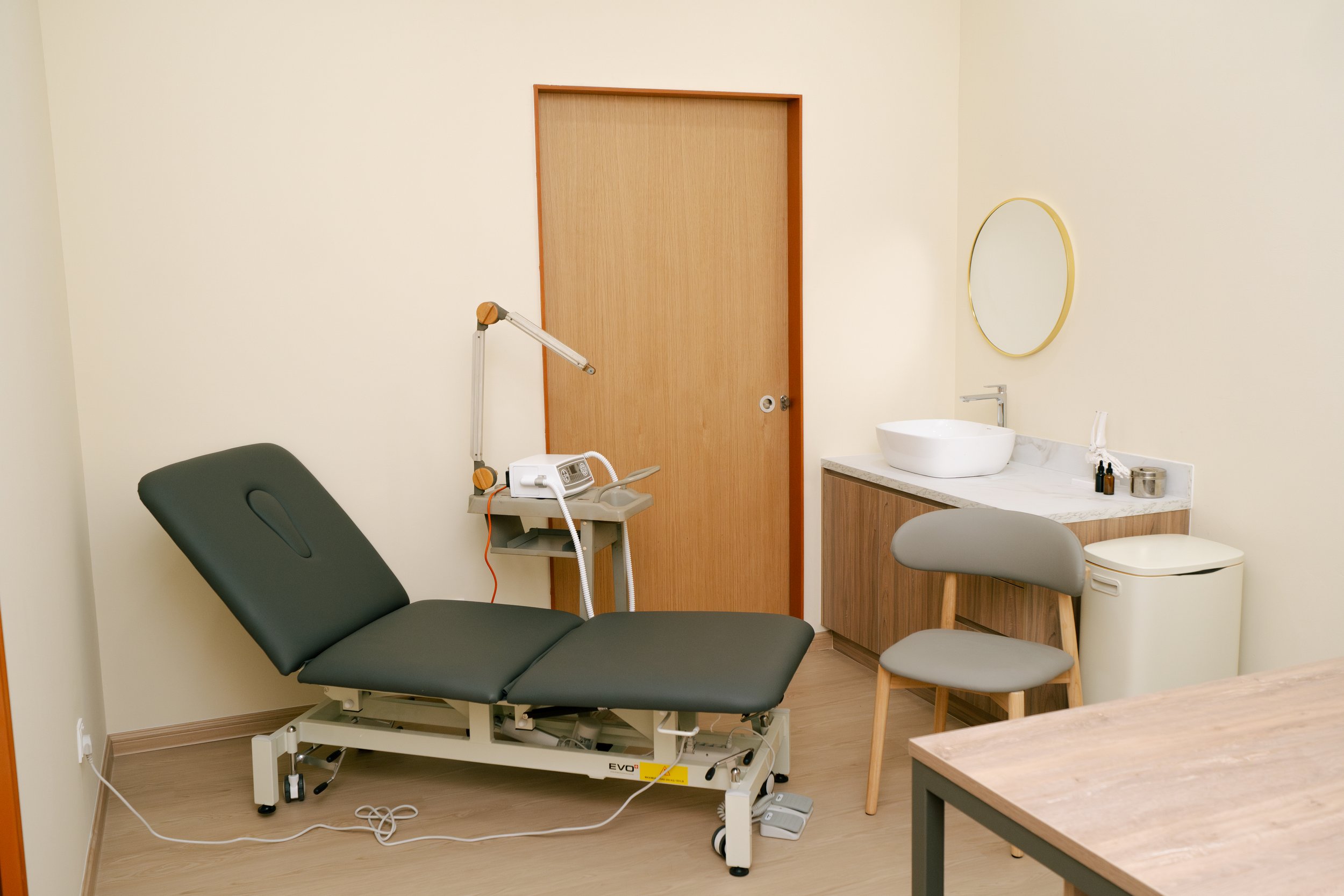
Iliotibial Band (ITB) Syndrome
What Is ITB Syndrome?
Your iliotibial band is a thick band of connective tissue that runs from your hip to just below your knee along the outside of your thigh. It plays an essential role in stabilising your knee joint — particularly when you’re running or squatting.
When this band becomes tight or overused, it rubs against the bony structures on the outside of the knee (particularly the femoral epicondyle), leading to inflammation and pain. This is known as ITB syndrome — and it’s one of the most common causes of lateral knee pain in runners and cyclists.
Causes & Risk Factors
ITB syndrome is usually an overuse injury caused by repetitive movement of the knee joint. Contributing factors may include:
Sudden changes to training — distance, speed, hills, or frequency
Running on sloped surfaces or one-sided cambered roads
Incorrect bike fit or toe-in pedal position
Poor foot biomechanics — especially excessive pronation (rolling in)
Worn out or unsupportive footwear
Muscle weaknesses — particularly in the glutes or hip abductors
Skipping recovery or training through previous injuries
Tight IT band or surrounding muscles (glutes, quads, TFL)
Leg length discrepancies, bowed legs, or past surgery
When your hip, knee and foot aren’t working in harmony, the IT band can bear more strain than it’s designed for — leading to overload and irritation.
Symptoms
The hallmark symptom of ITB syndrome is pain on the outside of the knee, especially when bending the knee during exercise. You may also notice:
A sharp, burning or aching pain over the outer knee
Pain that worsens with running, climbing stairs, or squatting
Swelling or tenderness over the lateral knee
A snapping or popping sensation with movement
Pain that improves with rest — but returns with activity
This condition can sometimes be confused with lateral meniscus issues or other soft tissue injuries, which is why an accurate diagnosis is key.
Diagnosis
At KL Foot Specialist, our podiatrists use a comprehensive biomechanical and physical exam to diagnose ITB syndrome. We assess:
Pain location and history
Muscle strength, flexibility and joint function
Gait analysis and movement patterns
Foot and lower limb biomechanics
If there’s suspicion of additional involvement — like bursitis or joint degeneration — we may refer you for imaging (e.g. ultrasound or MRI) to confirm the extent of inflammation or rule out other causes.
Treatment
Our treatment plan for ITB syndrome is designed to reduce pain, address the underlying cause, and restore full function so you can return to the activities you love.
Your personalised care may include:
RICE (Rest, Ice, Compression, Elevation) to calm initial pain and swelling
Stretching and foam rolling to release tight fascia and surrounding muscles
Strengthening exercises, especially for the glutes, hips, and lateral leg muscles
Gait retraining to improve stability and alignment during walking or running
Custom foot orthotics to correct overpronation and reduce tension on the ITB
Shockwave therapy to promote healing and break down tight tissue
Footwear advice and modifications for better support and shock absorption
Training program review to optimise load, intensity and recovery
We’ll walk you through every part of the plan and adjust your care as you progress.
What Happens If I Ignore It?
Unfortunately, this is not a “run through it” injury. Ignoring ITB syndrome can lead to:
Chronic knee pain
Further inflammation or tendon damage
Reduced performance or sidelining from sport
A much longer recovery time
Addressing it early = quicker return to pain-free movement.
Prevention Tips
To reduce your risk of ITB syndrome or stop it from recurring:
Warm up and cool down properly
Avoid overtraining — stick to gradual increases
Replace worn-out shoes regularly
Train on flat, varied surfaces
Stretch and strengthen key leg muscles (glutes, hips, quads)
Use a foam roller post-training
Ensure your bike fit is professionally assessed
Consider orthotics if you overpronate or have lower limb alignment issues
Get Expert Help from KL Foot Specialist Podiatry
We’ve helped hundreds of runners, cyclists and active individuals overcome ITB syndrome and return to their goals pain-free — and we can help you too. Whether it’s a new twinge or chronic knee pain, we’ll get to the bottom of it and build a plan around your needs.
Book an appointment with us today to take the first step.
